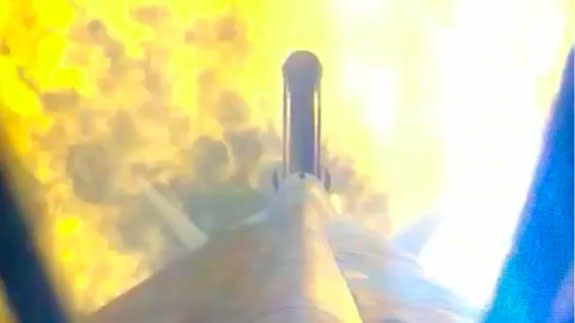Bezos' Blue Origin shows what it looks like to land a rocket back on Earth

A new Vine posted by the Jeff Bezos-backed rocket company Blue Origin reveals a new perspective on what it's like to land a rocket back on Earth.
The video shows a sped-up version of the moments just before the New Shepard suborbital vehicle touched down back at the company's test site in West Texas on Jan. 22, after it launched to the edge of space.
SEE ALSO: Jeff Bezos-backed company launches then lands its rocket... again
This booster also flew during a test launch in November 2015, making this the second time this particular vehicle has flown to great heights.
The January flight brought New Shepard to about 63 miles, or about 101.7 km, above the planet's surface, according to Blue Origin. Once near that height, the New Shepard capsule separated from the launcher before both came back to Earth separately.
One day in the relatively near future, Blue Origin wants to use the New Shepard system to bring paying customers to suborbital space, allowing them to see Earth against the blackness of space and float in weightlessness.
Launching a rocket and then landing it back on Earth is no easy feat, and to Bezos, it isn't a gimmick.
The billionaire space enthusiast hopes to one day see "millions" of people living off the planet in space, and Bezos thinks that in order to make that dream come true, we need reusable rockets.
At the moment, spent rocket bodies are discarded into space only to burn up upon re-entering Earth's atmosphere. In Bezos' mind, rocket parts should come back to Earth where they can be used again and again, reducing the cost of access to space.
Blue Origin isn't the only company aiming for reusability or for suborbital space.
SpaceX successfully landed the first stage of its Falcon 9 rocket back on land after launching a slew of satellites to orbit.
Virgin Galactic, too, plans to use a reusable space plane and carrier aircraft to bring customers to suborbital space and back.


